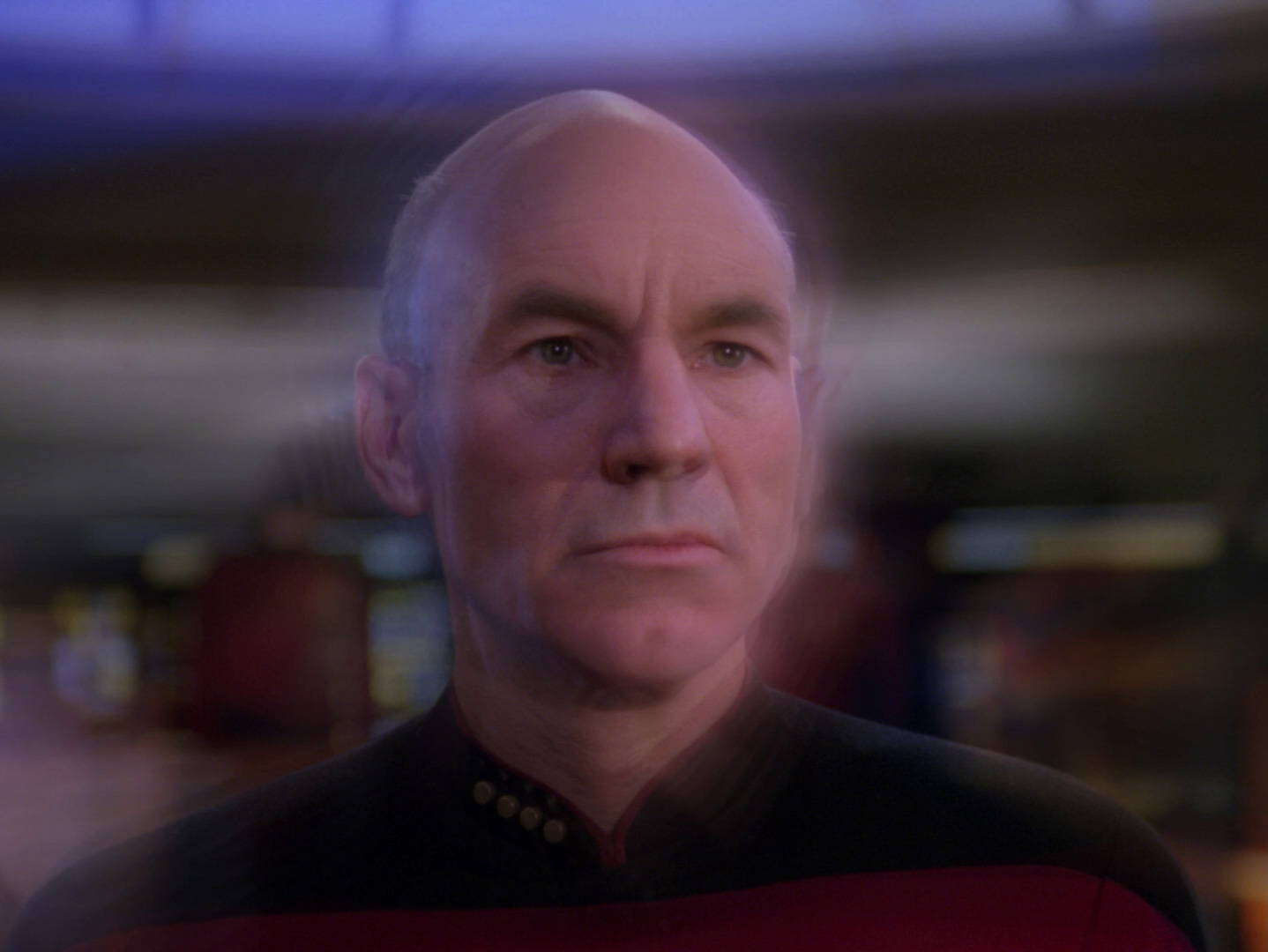“Geordi… tell me about Tasha Yar.”
Well, here we are – the episode that many would argue is not just the best of Star Trek: The Next Generation, but possibly the best of Star Trek, period. I don’t rank it quite that highly – it’s my third-favourite Next Gen episode, after “All Good Things” and “The Best of Both Worlds” – but that’s personal taste. There’s certainly no denying that “Yesterday’s Enterprise” is wall-to-wall brilliant, a model of the series at its zenith, and containing some of the most innovative storytelling and complex character beats that have ever appeared in the franchise. Against all odds, it sets a template for how Star Trek can work when it’s at its very best. It does this, of course, by being the exception that proves the rule.
I once made the cataclysmic mistake of showing “Yesterday’s Enterprise” to a girlfriend who had never seen an episode of Next Gen, who had asked me to show her what was considered to be the series’ best episode. Well, good intentions and all that, but a major strategic fail; “Yesterday’s Enterprise” is probably the least stand-alone episode of the entire run of The Next Generation. The entirety of its drama and weight is based on the audience’s knowledge of two things: 1) the “normal” version of life on the starship Enterprise, and 2) the life and death of Tasha Yar. Without those reference points, “Yesterday’s Enterprise” not only doesn’t make sense, but it doesn’t carry a lick of gravitas, either. Needless to say, the girlfriend in question did not become an immediate Star Trek: The Next Generation convert.
“Yesterday’s Enterprise” is a beautiful fan-wank. It’s an Elseworlds-style riff on all of the existing canon, from Wesley’s first appearance in a proper Starfleet uniform, to Picard’s ceaseless sniping at the alternate universe’s bleeding-heart version of Riker. Its two largest pieces of candy, though, are the previous incarnation of the Enterprise – raise your hand if you, like me, have a bottomless fixation on the ships that have borne the name – and the resurrection of Tasha Yar. Only in residence for a single episode, Tasha nonetheless completes a repatriation by Next Gen’s third season of the larger errors of its first, having already brought back Dr. Crusher. Tasha’s return here is an astonishing bit of writing; not only is it entirely justifiable from a narrative standpoint, but it allows for a beautiful retcon of the meaning and purpose of her previously meaningless and purposeless death. The cadre of writers on the episode – and “Yesterday’s Enterprise” was written by everyone, with six credited scripters in the final credits – even manage to work in a sweet, if relatively shorthand, romance for the character, in and around everything else.
This is all the more remarkable because the “everything else” in that statement is so massive. This episode is so tightly plotted, and still at the series’ standard 44 minutes, that it nearly seems to be happening in four dimensions – a fair point, given the time travel. It’s the Casablanca of Star Trek episodes, a perfectly measured and ruthlessly efficient storytelling frame that essays, in no particular order, heroism, destiny, fate, love, sacrifice, and the uncanny significance of the starship(s) Enterprise. In and around its perfect production design and excellent guest performances (Christopher McDonald is a particular favourite of mine), “Yesterday’s Enterprise” features a teleplay that can only be described as miraculous.
Sure, Guinan’s temporal ninjitsu strains credulity in increasing measures as the episode goes on, but to return to the Casablanca analogy, she’s essentially the Letters of Transit – i.e. the impossible thing that makes the story work, that you couldn’t care less about in the moment because the story is working so well. David Carson directs the holy hell out of the show, and composer Dennis McCarthy absolutely kills it on this one. The brilliant final act, in which Tasha and the crew of the Enterprise-C do not appear at all, while the narrative switches back to the Enterprise-D as the older ship inches painfully slowly towards the temporal rift, is as satisfying a piece of space combat as has appeared on Star Trek in anything from “The Cage” to Star Trek Into Darkness.
The only ones you end up feeling sorry for are Michael Dorn and Marina Sirtis, who – understandably – have no analogs in the alternate version of the Enterprise, and therefore had to sit the whole episode out. Worf, at least, gets his prune juice; Deanna, sadly, gets to sit in the background and look concerned for about ten seconds at the head and tail of the show. But the ride in the middle is so large, and the arc so resoundingly complete, that such nitpicking seems to miss, entirely, the point. This episode deserves more Enterprises out of five than I can reasonably provide.

Blogging The Next Generation runs every Tuesday as I work my way through every episode of Star Trek: The Next Generation on blu-ray. Season Three is available now.
